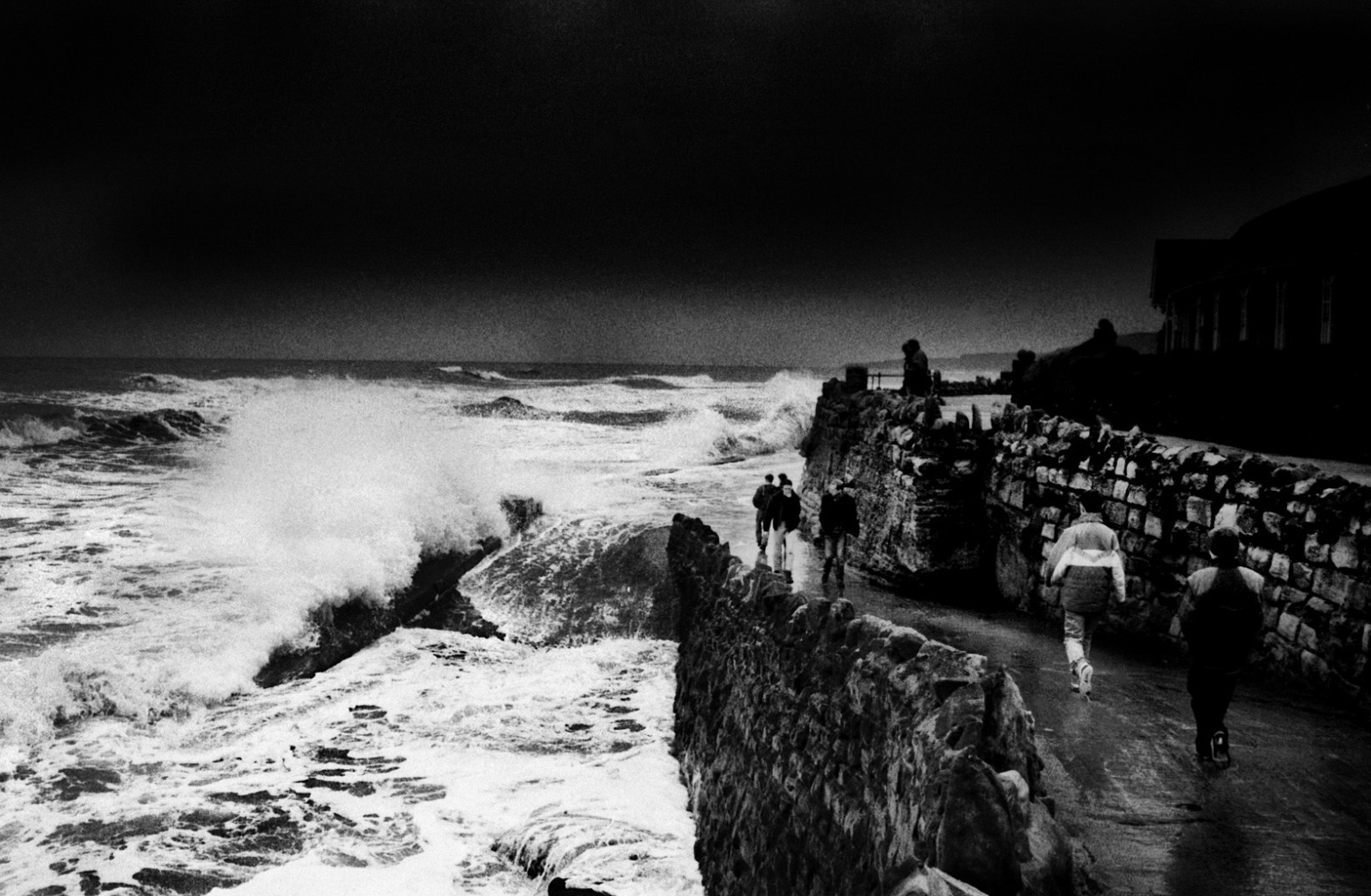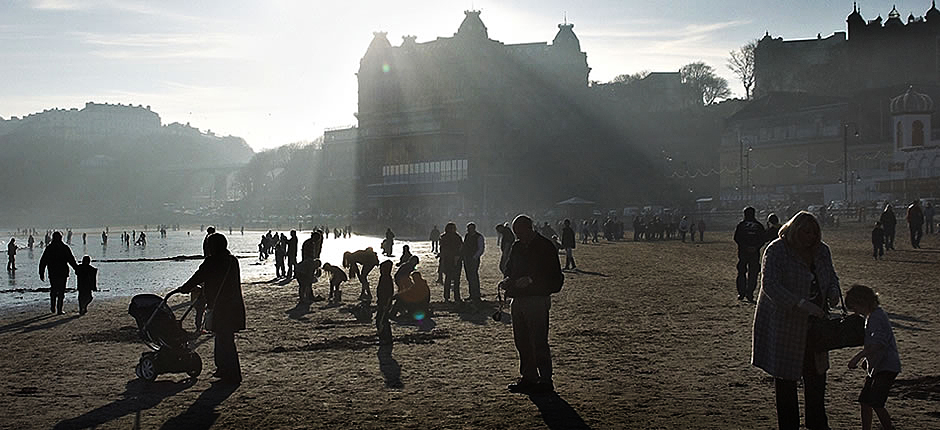From the Archive: Rough Weather

This image was taken in late 1995 along the seafront at Scarborough, North Yorkshire during a particularly rough and cold winter storm. The weather was as unpleasant as the image suggests.
I was amazed to see people, all boys or young men, going down the path to get closer to the breaking waves. The path was slightly back from the force of the waves, the waves were breaking on the edge of a ramp, but had a rogue wave rolled in, the spectators would have had no escape from being washed into the sea. My vantage point was higher up, back away from the waves, but even there the noise of the waves and strong wind was deafening.
The camera was a Pentax Program A fitted with a 50mm lens, a lightweight camera (compared with a NIkon F3/F4) that was also quite small in size which i used for most of the 1990’s. Around 1996 I purchased the Super A model which had more program modes. Sadly my camera was a rather worn version that was reaching the end of its working life – the winding mechanism was very temperamental, but it was a great camera to use. The Program A, however, is always the camera i have fond memories of using. It never let me down.
Film stock was TMAX 400 rated slightly higher at ISO 800.





